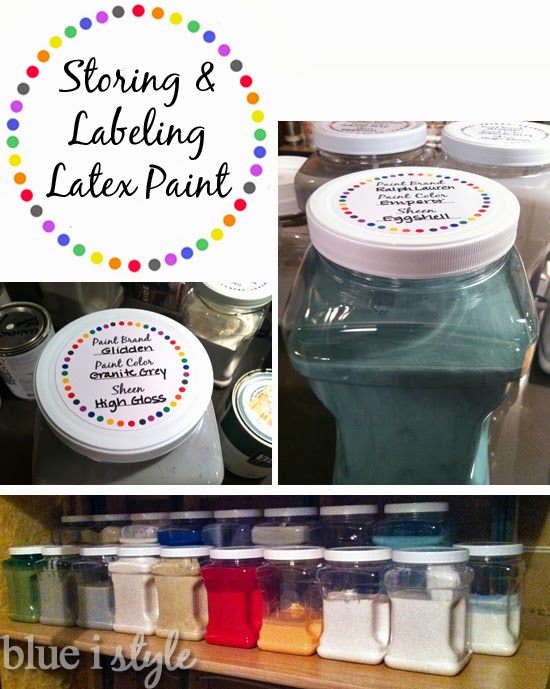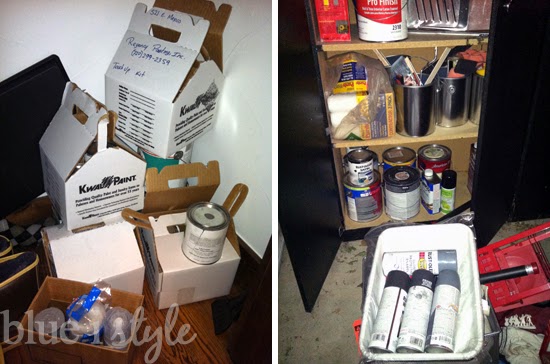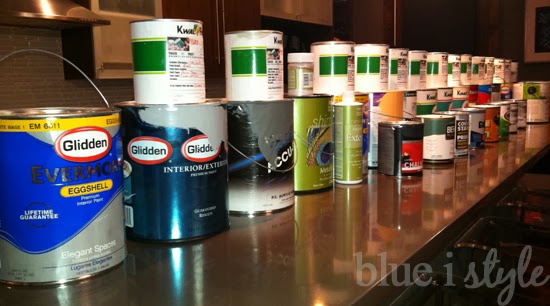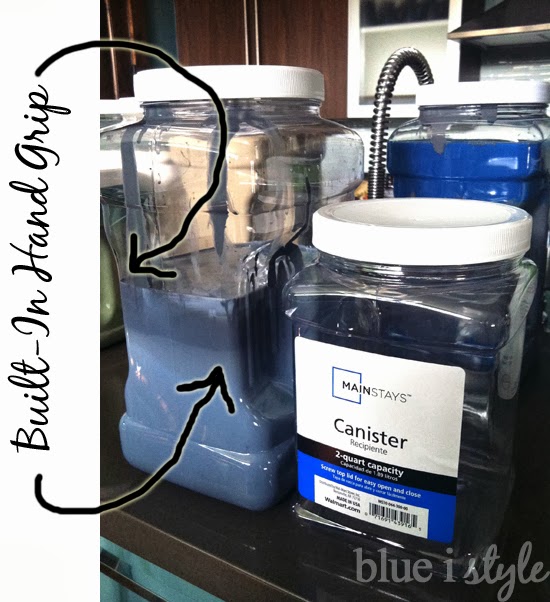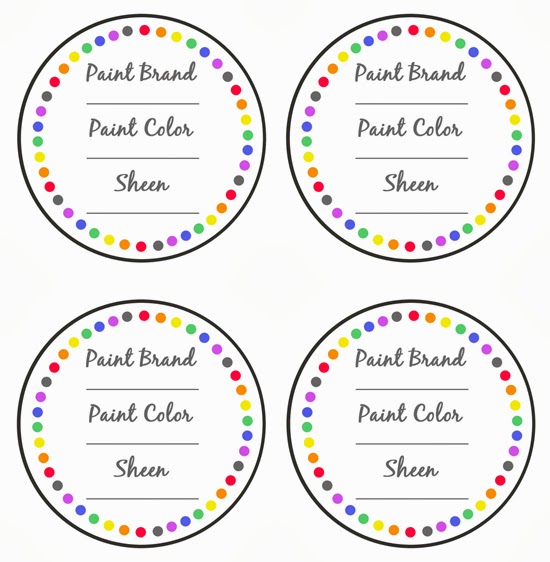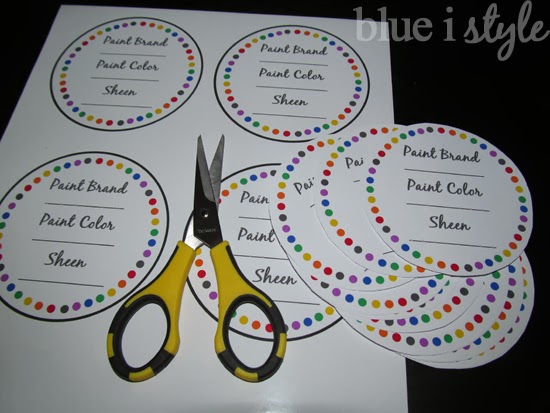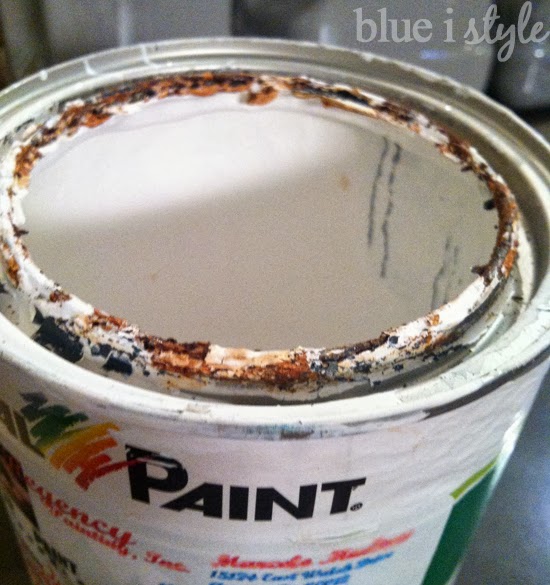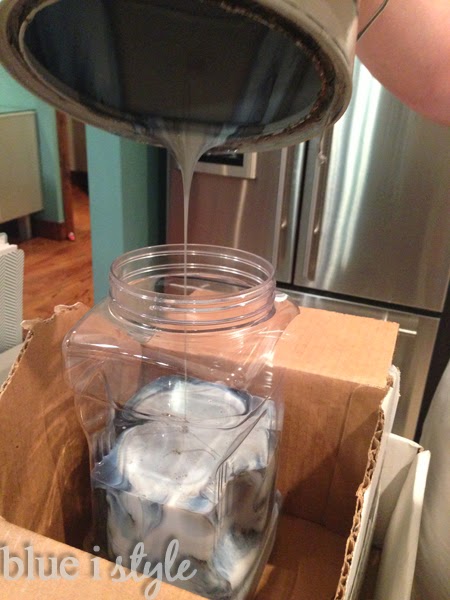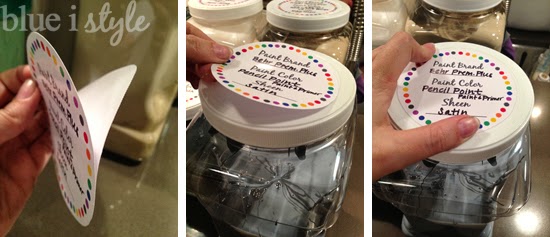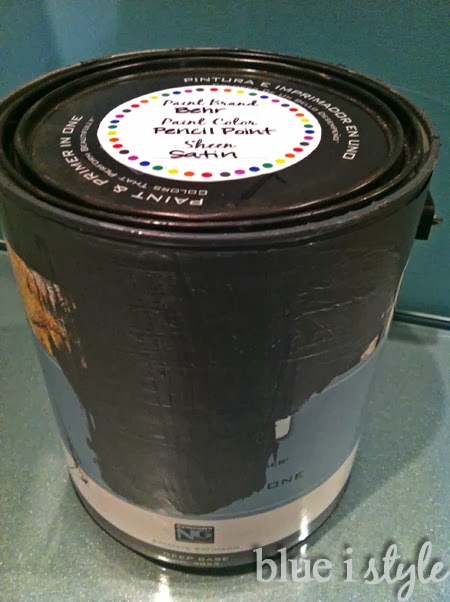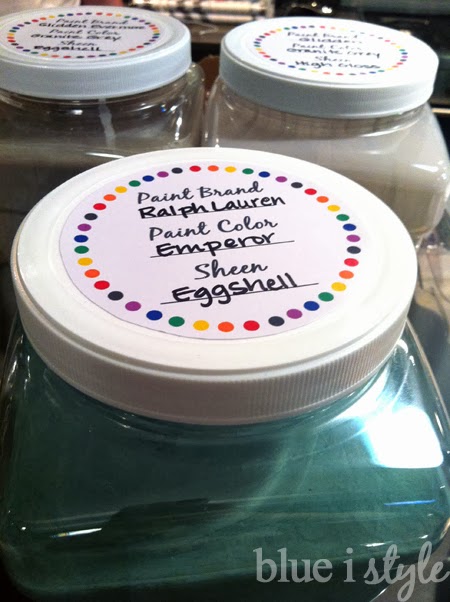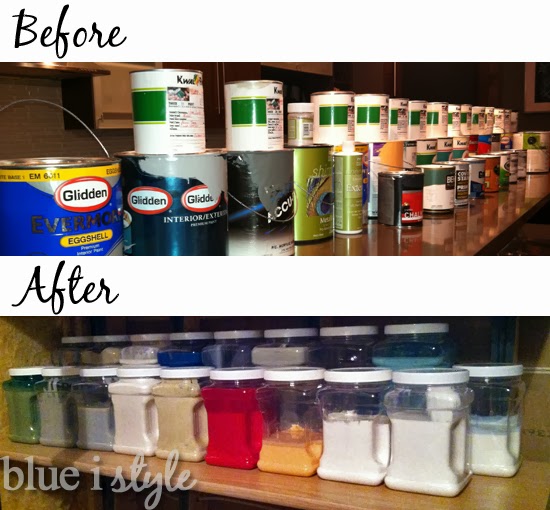To say we have a lot of latex paint might be an understatement! When we bought our home, the builder left us a touch up kit with 2 quarts of each color of paint used throughout the house (including the original wall colors, the trim, ceilings, and closet interior paints). Additionally, we have since repainted many of the rooms in the house, resulting in a lot more leftover paint (and in the case of the ombre stripes in the nursery we used five different colors).
But I liked the concept of transferring my paint to different containers, and I liked the idea of those containers being clear so that I could see the paint color within each. Since some paint brands have begun switching to plastic cans, it occurred to me that plastic containers would be a good alternative to glass mason jars. A little shopping turned up what I think is an ideal solution … plastic canisters.
In addition to being plastic, rather than glass, these canisters have several major advantages: (1) they come in two sizes – 1 gallon and 2 quarts, ideal for the quantities of paint I need to store; (2) they have screw tops that create a nice seal; (3) their overall square shape allows them to be lined up side by side while taking up considerably less space than a standard round paint can; (4) they have a great built in hand-grip that makes them easy to lift and pour with one hand; (5) they are a steal of a deal at WalMart – only $1.99 for the small canisters and only $2.99 for the large {say what you will about WalMart, but the price made this project affordable}; and lastly, (6) the canisters can easily be washed out and reused for a different color of paint in the future.
Before I started to transfer the paint from the cans to the canisters, I first wanted to create a record of all the paint details (including specifics like the color number). Click here for the details on that project.
Next, I needed to come up with a way to label the canisters. Rather than printing pretty labels with all the paint details already included, I instead opted to create a simple label upon which I could hand write the details. This was a forward thinking decision, because I know that, realistically, the next time I buy paint and transfer the leftovers to a canister, I won’t take time to print out a custom label for the paint. By having a simple label template, I can have extras printed up and ready to go, simply requiring me to write in the details when the time comes.
And guess what? I’m sharing the label template with you! Just click here to download the full-size (8.5 x 11 inch) template as a JPG file from which you can print your own labels. These labels are perfectly sized to fit the lids of the plastic canisters, but are also an ideal size for placing directly on the top of a paint can (more on that below).
I printed my labels on sticker paper (available at any office supply store, but much cheaper on Amazon if you want to purchase a larger quantity). Then, using the black border as a guide, I cut out the round labels.
Once my labels were cut and ready, it was time to start transferring paint. At this point you may be asking yourself, “Why go to all this trouble? Why not just leave the paint in the original cans?” They say a picture is worth a thousand words – so here is my best answer to that question:
Not only does it look gross, but that rusting can is certainly no good for the paint! And that particular can of paint is not even that old. If I were to leave all the paint in the original cans, the cans would continue to rust and ultimately ruin the paint. My online research indicates that their is really no good solution to stop cans from rusting, so transferring the paint to another storage container will prolong the life of the paint.
When it came to actually transferring the paint from the cans to my plastic canisters, we sat each canister in a cardboard box to protect our kitchen counter from any drips or spills, then we simply poured the paint from one container to the other.
One-by-one we transferred the cans of paint into the canisters and labeled the top of each canister with a sticker indicating its contents, including the brand of paint, paint color, and sheen. I peeled the backing off of the sticker paper and placed each label in the center of the canister lid, pressing down around the edge to create a good seal.
Once all of my paint was transferred into the canisters, and all of the lids were labeled, I was so pleased with the results. Now a quick glance allows me to see the color of the contents and the approximate quantity. Best of all, however, is that my paint is no longer at danger of being ruined by rusting cans.
And just a quick glance at the new paint canisters lined up on a shelf in the utility room illustrates how much less space they take up when compared to the paint cans.
|
Sorry for the poor quality of the after photo – it’s dark in the utility room.
|
A few important things to note: I only transferred my latex (water based) paint into the plastic canisters. I have read that oil-based paint will eventually eat through plastic, so I don’t recommend storing oil-based paint in plastic canisters like these. Since oil-based paints suffer the same woes from rusting cans, instead consider using glass to store leftover oil-based paints. Additionally, I will only be storing my latex paint in the utility room. Oil-based paint, or any other kind of paint that is combustible (including metallic primer and cans of spray paint) should not be stored near the furnace or water heater, so I will be storing these paints elsewhere.
Next week I’ll be posting more detailed information regarding proper paint storage, as well as how to dispose of paint that has gone bad and how to recycle all those empty paint cans that you’ll be left with after transferring your paint to new containers. I’ll also be back next week with the final reveal of all of our paint supplies organized on our new utility room shelving. UPDATE: Click here for the reveal of the organized utility room, which now houses all of our paint and painting supplies.
